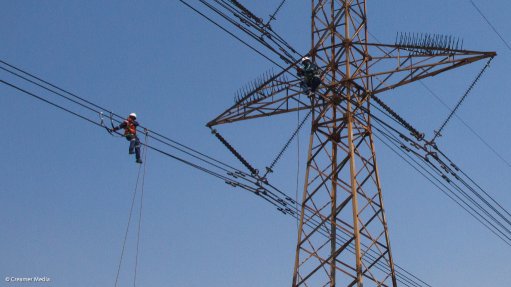Marginal decrease in South Africa’s unemployment rate
South Africa’s official unemployment rate decreased marginally by 0.4 of a percentage point to 27.1% in the final three months of 2018, Statistics South Africa (Stats SA) reported on Tuesday.
The Quarterly Labour Force Survey (QLFS) indicates the number of employed people increased by 149 000 to 16.5-million in the fourth quarter, while the number of unemployed people declined by 70 000 to 6.1-million people, compared with the third quarter.
The formal sector recorded the largest employment gains of 92 000, followed by 65 000 in private households and 7 000 in agriculture. The informal sector employment declined by 15 000 people.
The QLFS also showed that the number of discouraged work-seekers increased by 108 000. The number of other not economically active persons deceased by 38 000, resulting in an increase of 70 000 (up by 0.5%), in the number of people not in the labour force between the third and fourth quarters of 2018.
Quarter-on-quarter, the South African working age population increased by 149 000 or 0.4%.
The QLFS Q4:2018 was released by the Statistician-General of South Africa Risenga Maluleke, on Tuesday, in Pretoria.
Commenting on the results, Nedbank attributed the unemployment rate drop mainly to the usual seasonal rise in temporary workers during the festive season.
Investec indicated that the number of individuals employed in the formal sector of the economy rose by 0.8% quarter-on-quarter or 92 000 individuals. It posited that these figures are insufficient to drive any notable change and continue to be characteristic of a subdued domestic economy, with only marginal gross domestic product growth of about 0.5% year-on-year anticipated for 2018.
In light of this, Investec highlighted the need for an increase in policy and political certainty post an anticipated favourable May election outcome, together with the mending of structural inefficiencies in the economy, to potentially boost sentiment somewhat, driving fixed investment and therefore sustainable employment.
The number of employed persons declined in four of the ten industries in the fourth quarter: 51 000 in community and social services, 30 000 in transport, 22 000 in utilities, and 21 000 in construction.
However, these declines were offset by employment gains in other industries: 109 000 in finance and other business services, 65 000 in private households, 48 000 in manufacturing, 31 000 in mining, 14 000 in trade, 7 000 in agriculture.
In terms of the different provinces, five of the nine recorded employment gains in the last three months of 2018.
The largest increases were 86 000 in Gauteng, 33 000 in the Free State and 26 000 in the Western Cape.
On the other end of the spectrum, the largest employment losses were recorded at 15 000 in the Eastern Cape and 6 000 in the North West provinces.
Despite the official unemployment rate decreasing at a national level, on a provincial level, the rate increased in two of the country’s nine province. This constituted a 2.6 percentage point increase in KwaZulu-Natal and 0.5 of a percentage point increase in the Eastern Cape.
The remaining seven provinces saw a decrease in the unemployment rate.
Year-on-year, the official unemployment rate increased by 0.4 of a percentage point. The largest increase was recorded in Mpumalanga at 3.1 percentage points, followed by North West at 2.7 percentage points; while the largest decrease was recorded in Limpopo at 3.1 percentage points, followed by Northern Cape at 2.1 percentage points and Western Cape at 0.2 pf a percentage point.
Compared with the third quarter 2018, the expanded unemployment rate decreased by 0.3 of a percentage point in the fourth quarter to 37.0%. The largest increases were 0.8 of a percentage point in the Eastern Cape and 0.7 of a percentage point in Limpopo.
Between the fourth quarter of 2017 and the quarter under review, the percentage of young persons aged 15 to 24 years who were not in employment, education or training (NEET) increased by 1.4 percentage points to 31.1%.
Females are particularly susceptible, with the NEET rate higher for females than for males in both time periods.
Compared to the final quarter of 2017, the percentage of youth NEET aged 15 to 34 increased by 0.5 of a percentage point from 38.4% to 38.9%. Moreover, four in every ten young females were not in employment education, or training.
Comments
Press Office
Announcements
What's On
Subscribe to improve your user experience...
Option 1 (equivalent of R125 a month):
Receive a weekly copy of Creamer Media's Engineering News & Mining Weekly magazine
(print copy for those in South Africa and e-magazine for those outside of South Africa)
Receive daily email newsletters
Access to full search results
Access archive of magazine back copies
Access to Projects in Progress
Access to ONE Research Report of your choice in PDF format
Option 2 (equivalent of R375 a month):
All benefits from Option 1
PLUS
Access to Creamer Media's Research Channel Africa for ALL Research Reports, in PDF format, on various industrial and mining sectors
including Electricity; Water; Energy Transition; Hydrogen; Roads, Rail and Ports; Coal; Gold; Platinum; Battery Metals; etc.
Already a subscriber?
Forgotten your password?
Receive weekly copy of Creamer Media's Engineering News & Mining Weekly magazine (print copy for those in South Africa and e-magazine for those outside of South Africa)
➕
Recieve daily email newsletters
➕
Access to full search results
➕
Access archive of magazine back copies
➕
Access to Projects in Progress
➕
Access to ONE Research Report of your choice in PDF format
RESEARCH CHANNEL AFRICA
R4500 (equivalent of R375 a month)
SUBSCRIBEAll benefits from Option 1
➕
Access to Creamer Media's Research Channel Africa for ALL Research Reports on various industrial and mining sectors, in PDF format, including on:
Electricity
➕
Water
➕
Energy Transition
➕
Hydrogen
➕
Roads, Rail and Ports
➕
Coal
➕
Gold
➕
Platinum
➕
Battery Metals
➕
etc.
Receive all benefits from Option 1 or Option 2 delivered to numerous people at your company
➕
Multiple User names and Passwords for simultaneous log-ins
➕
Intranet integration access to all in your organisation


















